Time to Read: 8 Minutes
The State of Today’s Hiring Market
Long before the hiring process begins, it’s important to understand today’s hiring market. Over the past five years, there has been a growing shift from a solely employer-driven market to a more balanced and competitive landscape. Previously, job seekers were often faced with limited job opportunities based on where they lived, giving employers a competitive edge over the hiring process. But with the increase of remote work and evolving employee expectations, employers are no longer in complete control.
Coupled with that, the hiring process has transformed significantly — and some would say even gotten more difficult, especially as the level of job specialization and variety of roles have increased. Between the fluctuating cycles of major layoffs and subsequent hiring sprees, top job seekers have become increasingly cautious and discerning when it comes to applying for positions. Their priorities now revolve around well-being, flexibility, and the ability to trust their prospective employers. This shift in mindset has necessitated a revised approach to recruiting and hiring to attract the ideal talent for the job.
With these changes in mind, these tips can serve as your go-to guide for mastering the art of hiring, providing essential hiring tips and insights to navigate the evolving landscape and build a stellar team that propels your organization toward success.
Before The Hire
Being ready to hire before the hiring process begins is key for a company to streamline its recruitment efforts and ensure a successful outcome.
- Create an Ideal candidate profile and a compelling job description
Outline the key competencies that are needed in your ideal candidate profile before creating the job description. You can access our ICP template here. It offers step-by-step instructions on identifying and defining necessary qualifications. After completing the candidate profile, create a job description that accurately represents the role and company culture. Be mindful only to include truly required qualifications versus nice to haves so as not to eliminate top talent while outlining the skills and experience necessary for the role. Transparency on compensation and benefits will be seen as positive highlights and give a candidate-centric feel to your hiring process. A well-written job description attracts the right candidates and sets the right expectations from the start. - Take ownership of the hiring process
Ensure that all team members involved in the recruitment and selection process are aligned and share a common understanding of the open position’s goals, requirements, and expectations. This involves effective communication and collaboration among interviewing team members to establish clarity and consistency throughout the hiring process. Be wary of round-robin style interview approaches where every interviewer is a decision-maker. - Create scripted interview questions
Establishing scripted interview questions around the competencies outlined in your ideal candidate profile is fundamental for companies in the hiring process. These pre-vetted questions ensure the right areas are being assessed while providing consistency. When you ask all candidates the same set of questions and ensure fair evaluations, you not only reduce potential biases but also ensure you’ve thoroughly assessed the skills and behaviors needed for the job throughout the interview process. This approach greatly increases the chances of hiring candidates who excel at their job and stick around for the long term. It’s important not to confuse these scripted questions as detracting from your personality and company culture. Think of it as a guide that helps you stay on track and sets clear expectations for candidates throughout the interview process. - Invest in proper interview training
Companies should invest in interview training for their hiring teams to improve the quality and effectiveness of their hiring process. Proper interview training equips team members with the necessary skills and techniques to conduct structured and objective interviews, ask relevant and insightful questions, evaluate candidates fairly, and avoid bias or discrimination. This training ensures consistency, enhances the ability to identify top talent, and ultimately leads to better hiring decisions, saving time and resources in the long run.*If you can’t afford interview training, work to make sure each member of your hiring team (including recruiters) is all on the same page regarding what each stage of your company’s interview process will look like.
The Hiring Process
You’re ready for hiring once you’ve tackled and executed steps one through four. These hiring tips provide valuable insight and guidance to streamline your recruitment efforts, conduct effective and engaging interviews, and make well-informed decisions regarding job offers and rejections.
- Recruiting the right candidates
The recruiting process is a strategic approach by companies to identify, attract, and select the most qualified candidates for job positions. But that’s easier said than done. To truly see success in candidate sourcing, carefully craft your message that includes multiple follow-ups. Short emails that highlight the company value of your company, exciting developments, and being open about compensation details can make a significant difference. Remember to ask for referrals at the end of your message if the candidate isn’t qualified or interested but might know of someone who is. - Interviews
Now that you’ve got a defined and structured interview process with questions, it’s time to implement it. When conducting interviews, it’s advisable to skip the small talk and begin by outlining the agenda. This helps ensure that both the candidate and interviewer cover all necessary topics within the allocated time. Remember to take notes during the interview to review later based on the candidate’s responses. Additionally, avoid discussing the candidate with other interviewers before conducting your interview to prevent any biases in the meeting.After the interview, aim to provide the candidate with a clear decision (either yes or no) within 24 hours regarding their progression to the next stage. It’s important to note that moving someone to the next step does not mean you have made a final decision to hire them; it simply indicates that they have successfully passed the assessment phase of the interview. - Offers and rejections
Despite their major differences, hiring tips for offers and rejections go hand in hand. The two biggest complaints we hear from candidates after an interview relate to communication and timeliness. Efficiency during the hiring process provides candidates with insight into the company’s operations. It shows whether the company tends to overcomplicate processes or if they prioritize working efficiently to achieve desired outcomes.
Offers – When it comes to giving a candidate an offer, time is of the essence. Ensuring no momentum or excitement is lost, giving a verbal offer first within 24 hours of the final interview is the best approach, followed by a formal offer letter. This is meant to remove the back-and-forth negotiations before the formal offer is presented. Setting a time limit (usually around 72 hours) for the offer is crucial to ensure there is a clear deadline for making a decision. Ensure you know your organization’s offer letter process so nothing gets tied up at the final stages. A day or two can mean the difference in another company courting or swaying a candidate towards their job.
Rejections – Just like you want to move quickly when telling candidates about the next steps, you should also be efficient when finalizing their status. You don’t have to go into too much detail when letting them know, but for those who have done really well or impressed you, it’s best to give them a personal call. Providing a great experience for candidates is important because it helps create a positive image of the company as an employer and encourages them to refer others or consider future opportunities.
After The Hire
Once a company has made a hire, the subsequent steps are critical to ensure a smooth onboarding process and optimize the new hire’s transition into the company and to their team. Adopt these after-the-hire hiring tips to help foster employee success, productivity, and retention.
- Communication and support
Maintaining open lines of communication and providing ongoing support is essential for any new hire’s success. But make sure this happens before they actually start. Remember that starting a new job, even one that you want, can be overwhelming and sometimes get the better of us, especially for highly desired candidates. To help them stay focused and ease their transition, try to check in with them and see how they’re doing. Consider sending a personal welcome note or some company swag to show your enthusiasm for their joining and to provide support. This gesture will greatly contribute to building trust with your future employee. Once they officially join the company, continue to maintain regular check-ins, provide feedback sessions, and create opportunities for them to express any concerns or challenges they may encounter.
These practices will enhance their engagement and satisfaction in their new role. Regular check-ins, feedback sessions, and opportunities for new employees to express concerns or challenges will contribute to their engagement and satisfaction. - Onboarding
A comprehensive (and well-planned) onboarding process is key to helping new employees acclimate to company culture, clearly understand their roles and responsibilities, and establish working relationships with colleagues. Most human resource experts agree that onboarding for a full-time position should take at least three months. - Retention strategies
Most companies can expect to pay between $4,000 and $20,000 to hire a new employee, not including salary and benefits. For that reason alone, it’s crucial companies have a stellar retention system/plan/strategy in place something something something something …. This should include career advancement opportunities, competitive compensation and benefits, a positive work environment, recognition, and rewards programs, and ongoing professional development.
Check out our Go-To-Market Interview Guide for the top five tips to implement a diversity hiring plan.

